Photographer Creatively Explores His Deteriorating Vision Through Collaboration
![]()
Matt Cetta, who was diagnosed with the degenerative eye disease Retinitis Pigmentosa, has transformed his experience of vision loss into art through a new collaboration with fellow photographer Christina DeOrtentiis. Together they explore resilience, blindness, and the evolving meaning of sight through their project, Unseen Crucible.
About Matt Cetta
Matt Cetta is a photographer whose work has long explored transformation, perception, and the limits of the human eye. More than a decade after his experimental series Photogenic Alchemy, Cetta finds himself confronting transformation once again, not through chemical reactions in a darkroom but through the shifting realities of his own sight. Following his diagnosis of Retinitis Pigmentosa (RP), a degenerative condition that gradually diminishes vision, Cetta has had to redefine his connection to photography, to perception, and to self-expression. The experience has forced him to rethink how he interacts with his tools and how he interprets the world around him.
“I’ve simply learned not to trust my eyes as much,” Cetta says.



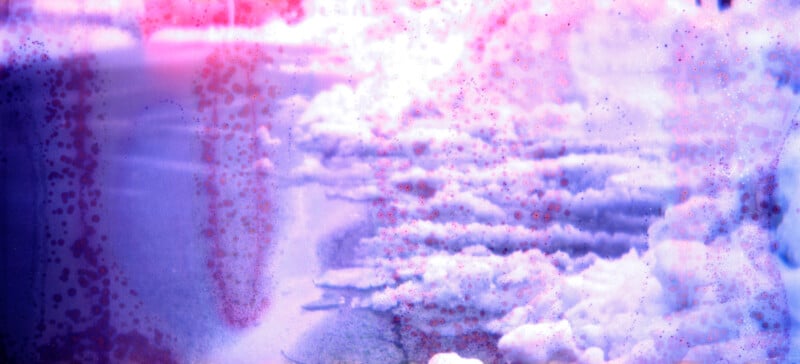
Rather than stepping away from his practice, Cetta has adapted, embracing both technology and new approaches to continue creating. His work now reflects a unique negotiation between the evolving capabilities of his eyes and the possibilities of his cameras. With honesty, humor, and a willingness to confront vulnerability, Cetta’s photography bridges the gap between personal experience and visual expression, capturing both the fragility and resilience of living with RP.
Chemistry, Time, and Chance
Once a photographer known for his precise manual control and experimental processes, he now leans on the evolving capabilities of modern camera technology to continue doing what he loves. Autofocus and sensor-based assistance have become essential extensions of his craft, allowing him to compensate for what his eyes can no longer guarantee. Yet the changes are not purely mechanical. They are emotional, too, rooted in the constant negotiation between confidence and doubt.
“The key thing to remember about RP is that most of the weirdness in my vision happens in the periphery. The center is pretty good, even though there is some visual snow… it looks like an old motion picture shot on high speed film,” Cetta explains.
Every photograph now begins with trust: trust in the tools, trust in his intuition, and trust that the image he envisions still exists beyond the limits of his perception.
“When I pick up a camera, I have to tell myself that I can still do this. Otherwise, I have to talk down the demons in my head that are telling me that I can’t do this because I’m blind,” he admits.
The Beginning of “Unseen Crucible”
That raw honesty and internal struggle became the foundation for Unseen Crucible, a collaborative project between Cetta and photographer Christina DeOrtentiis, who has long admired his work and perspective. While both artists maintain distinct bodies of work, this shared project emerged from candid conversations about what it means to lose one’s sight and, in turn, one’s traditional way of seeing. Their collaboration explores not only the visual symptoms of blindness but also its psychological and emotional dimensions, questioning how identity and artistry evolve when vision begins to fade.
“Initial conversations with Christina were just about my experiences as someone who is losing his vision,” Cetta recalls. “We agreed that it should be a bare-bones shoot where I just came as myself to the studio. Just me, my many pairs of glasses, and my cane.”
In stripping away the elaborate setups, the project became a study in honesty, two artists meeting in a space of vulnerability and learning from each other.

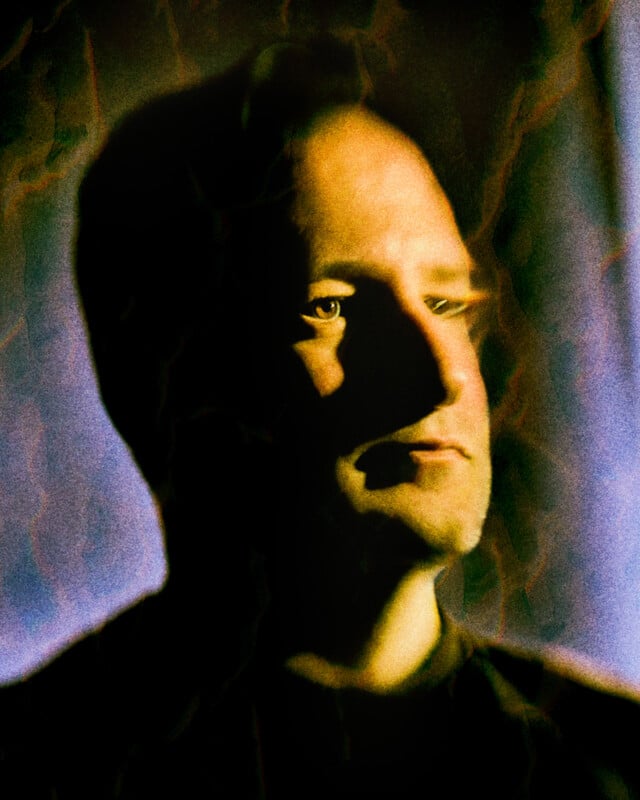
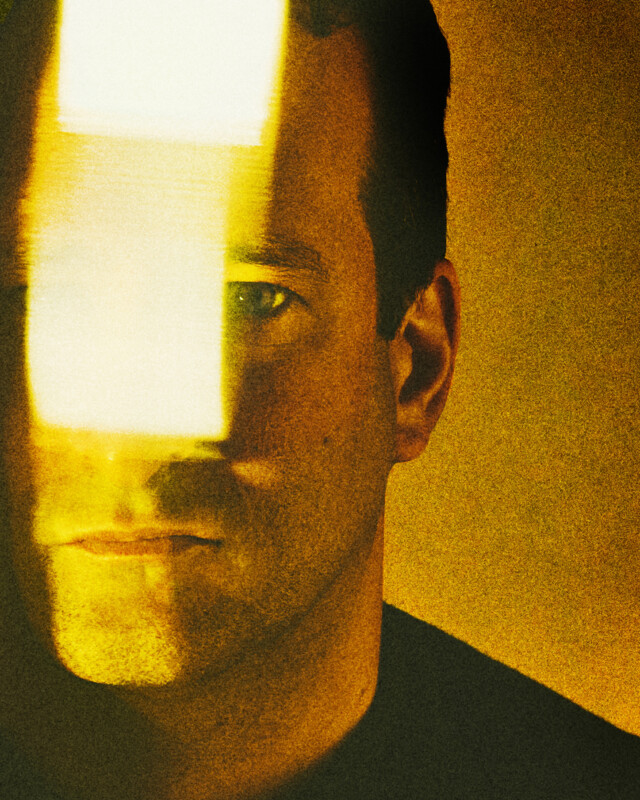
About Christina DeOrtentiis
A born and raised New Yorker from the Bronx, Christina DeOrtentiis discovered her passion for photography at an early age. This passion led her to earn a BFA with honors from the School of Visual Arts, where she honed her craft and gained invaluable experience through internships with industry leaders such as Macy’s, Elle Magazine, and Art + Commerce.



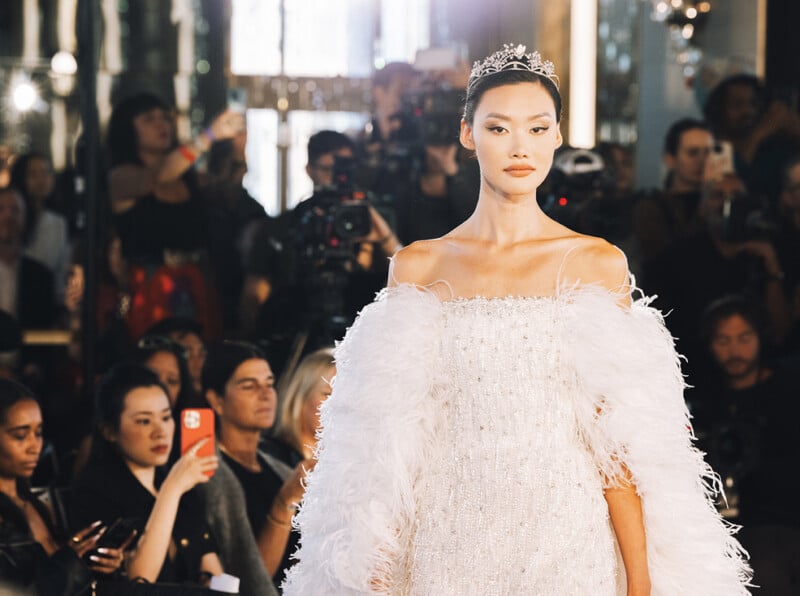
DeOrtentiis’s versatile style of photography effortlessly adapts to any subject matter. She brings vibrant red carpet moments to life, weaves dreamy narratives through editorial work, and captures behind-the-scenes memories at fashion week shows or film festivals with a distinctive perspective. Her work has been published in Marie Claire, Hollywood Reporter, Lucire, People, and Rain magazine.
For Unseen Crucible, DeOrtentiis partnered with Cetta to translate the complex sensory and emotional realities of vision loss into intimate, tactile images. Her process is characterized by careful listening and collaboration, often incorporating mixed-media techniques, layering textures, thread, and printing methods to create images that extend beyond traditional portraiture. Through her lens, DeOrtentiis explores not only the visual world of her subjects but also the emotional and psychological dimensions of their experiences, inviting audiences closer to perspectives they might never have encountered.



Listening and Interpretation
For DeOrtentiis, Unseen Crucible began with careful listening rather than conceptualization. She approached Cetta’s experience not as a subject to be captured but as a dialogue to be understood.
“I felt comfortable asking Matt any questions that came to mind,” DeOrtentiis says. “Having an honest dialogue with him gave me a foundation to build from.”
This open exchange shaped how she approached the work visually. Instead of relying solely on composition or lighting, she began exploring how texture and surface could mirror the sensory world Cetta described. The resulting process became tactile, a way of layering the unseen into the visual and evoking the weight and depth of lived experience.
“I knew right away the photos needed to feel tactile, because his experience with RP is so real,” she explains. “That’s what led me to explore a mixed-media approach, printing the photos on regular paper, layering materials with thread, and scanning them to create the final images.”
Her process transformed the act of photographing into one of reconstruction, a visual dialogue built from both material and metaphor, grounded in empathy.
![]()
Visualizing an Internal Experience
The resulting portraits from Unseen Crucible are intimate, atmospheric, and hauntingly introspective. Through blurred edges, softened contrast, and physical texture, the series invites viewers to sense rather than simply observe. The images are not meant to mimic vision loss but to translate emotion: the tension between clarity and distortion, fragility and resilience.
Cetta recalls one portrait in particular that struck him deeply, a soft, unfocused self-portrait surrounded by threads evoking the “myriad eye floaters” that drift through his field of view. Another captured the visual weight of his white cane, which he describes as both a literal aid and a symbol of strength and self-acceptance.
“I didn’t feel like I set out to depict resilience,” Cetta says. “I felt like I had to tell a story of someone grieving for his situation. It wasn’t until I saw these portraits that I said to myself, ‘holy shit! I’m resilient!’”
For DeOrtentiis, these emotional layers guided every technical decision. Shooting in black and white helped distill tone and light, while continuous lighting allowed Cetta to physically sense illumination as she adjusted it. During their collaboration, he mentioned that yellow-tinted glasses helped him distinguish edges, a detail she subtly echoed through gentle gels and tonal warmth, grounding the work in his lived reality.
“The most crafted image was the one where he extends his hands to show how far his peripheral vision goes,” DeOrtentiis explains. “I drew an iris with charcoal on translucent paper, overlaid it on the photo, and scanned it to create both a literal and interpretive reflection of his experience.”

Light, Focus, and Perception
As Cetta’s condition continues to evolve, so too has his relationship with light, the very essence of photography. Once a source of control and creativity, light has become unpredictable and sometimes adversarial. Yet rather than retreat, he has adapted, finding new ways to balance sensitivity and expression.
“I now have a love/hate relationship with light,” Cetta says. “I’m super sensitive to bright light and need to wear sunglasses during the day, even when it’s cloudy. I naturally gravitate toward warm tones. Sometimes I wonder if I’m overusing sharpening tools in Lightroom — it looks fine to me, but does it look overprocessed to everyone else?”
That uncertainty, while challenging, has also led to experimentation and introspection. Cetta’s evolving workflow embraces imperfection, allowing blur, glow, and uneven focus to become aesthetic elements rather than flaws, a testament to the resilience of creative adaptation.
Representation and Collaboration
While Unseen Crucible began as a deeply personal collaboration, it also resonates as a broader statement about representation and inclusivity within art. The project does not attempt to romanticize disability or frame it as inspiration; instead, it foregrounds the agency of the artist navigating change.
“It’s a fine line between representation and exploitation,” Cetta reflects. “What Christina did here was listen with an open heart and mind and invited collaboration from her subject to tell an authentic story.”
For DeOrtentiis, that authenticity meant resisting visual tropes and letting Cetta’s experience dictate the creative language. In doing so, the series moves beyond simple portraiture, becoming a form of advocacy through empathy.
“What stood out most from what Matt shared is that blindness exists on a spectrum,” she says. “Eyesight isn’t an on-and-off switch that you either have or don’t. Losing vision can be gradual, sudden, or never fully happen. Understanding how we see, both literally and figuratively, was deeply impactful.”


Connecting Through Art
As Unseen Crucible reaches new audiences, Matt Cetta hopes the work will resonate with those who share similar experiences, individuals navigating vision loss or confronting their own vulnerabilities. His goal is not pity or admiration, but understanding and connection.
“I just hope it gets in front of more eyes so more people can understand Retinitis Pigmentosa,” he says. “I’d also like it to reach people with RP and let them know they’re not alone.”
For Christina DeOrtentiis, the series has also become a catalyst for future work. She sees portraiture as a means of building bridges between lived experiences, using visual art to invite reflection and dialogue.
“I want to continue photographing others who have their own unique experiences to share,” DeOrtentiis says. “It was important for me to showcase both the resilience and inner turmoil one may feel when navigating the world with this condition. I am honored that Matt trusted me with portraying his story.”
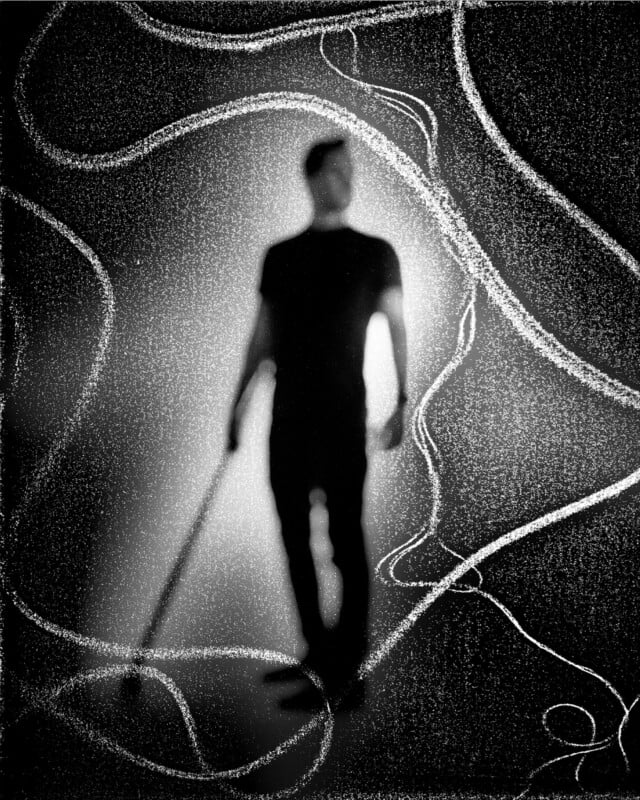
A Collaboration Forged in Vision and Trust
Through mutual respect, patience, and creative courage, Unseen Crucible transcends the limits of physical sight to explore how we perceive meaning and presence. What began as a conversation between two photographers became an act of transformation that acknowledges grief while uncovering resilience, and that redefines what it means to truly see.
Image credits: Matt Cetta, Christina DeOrtentiis